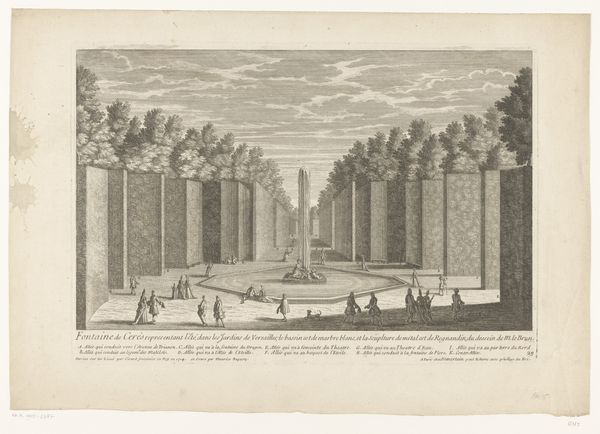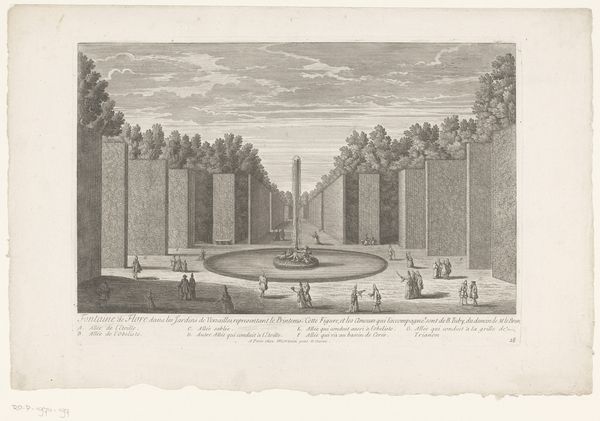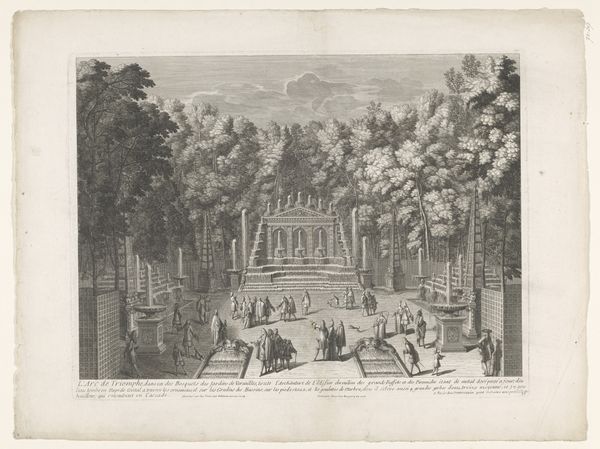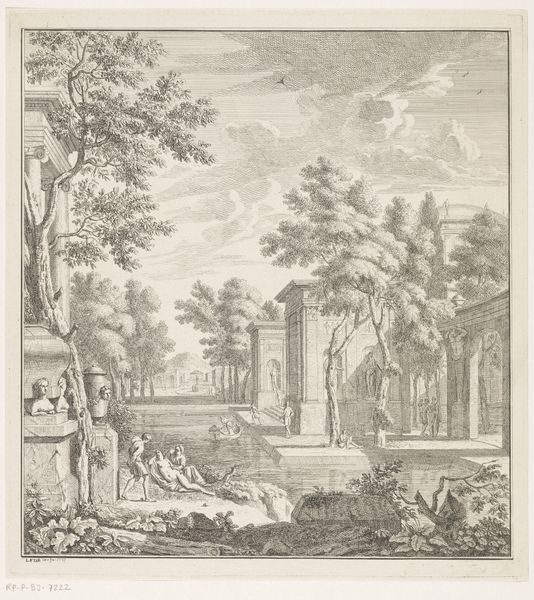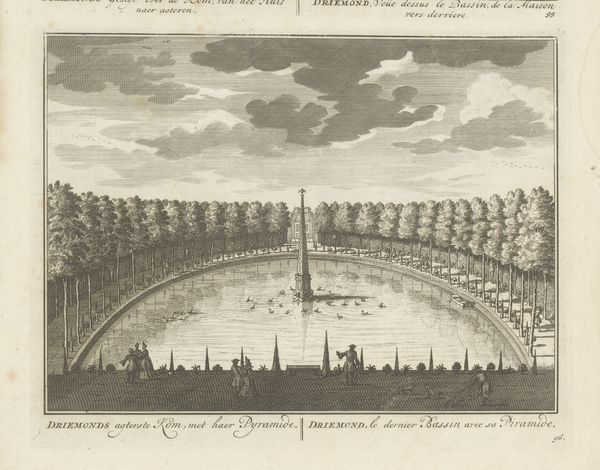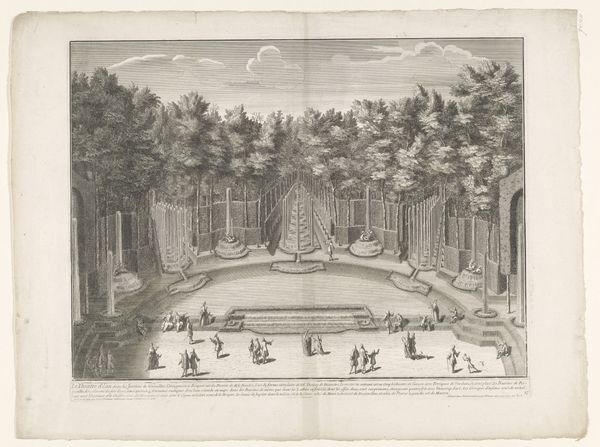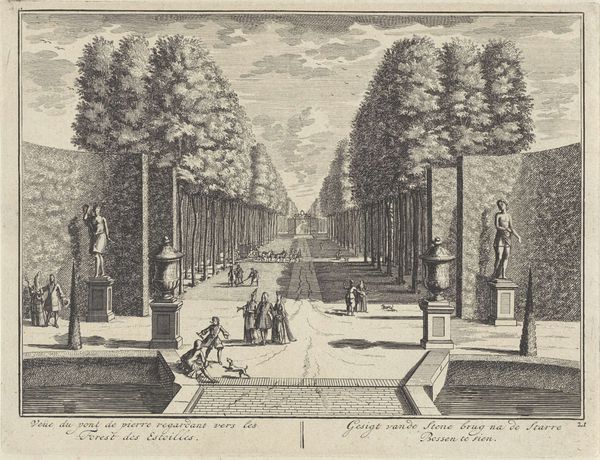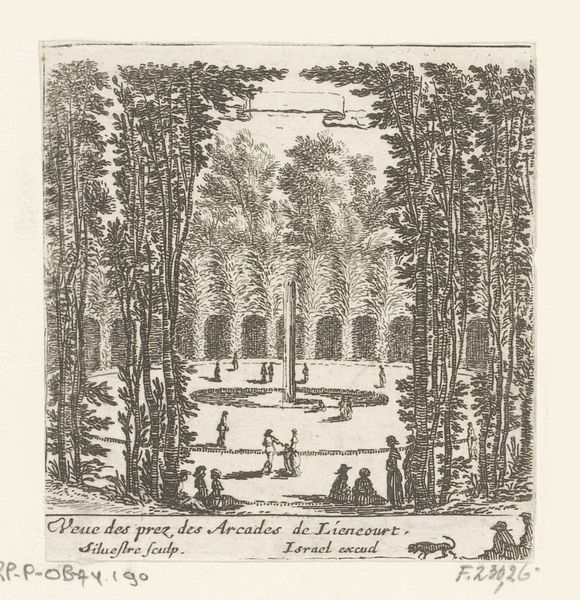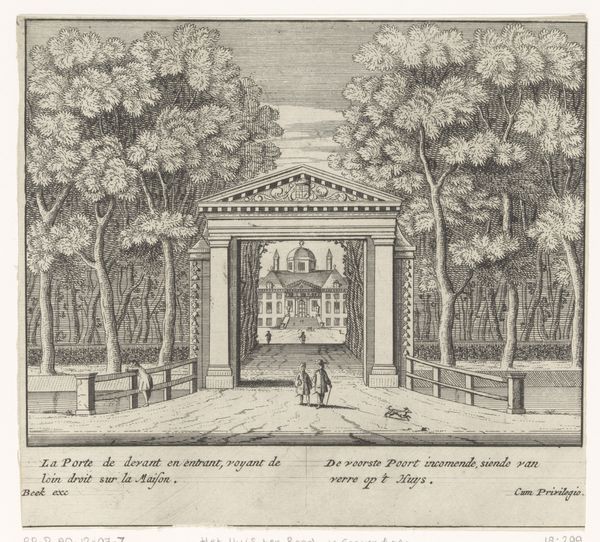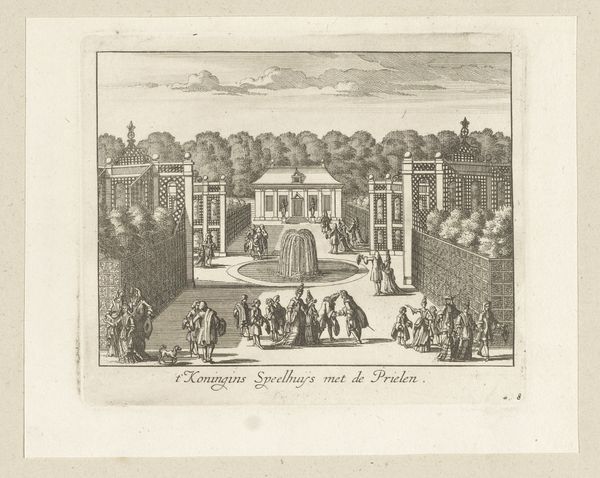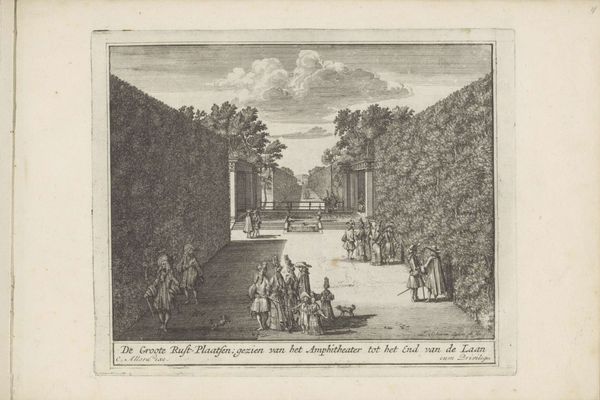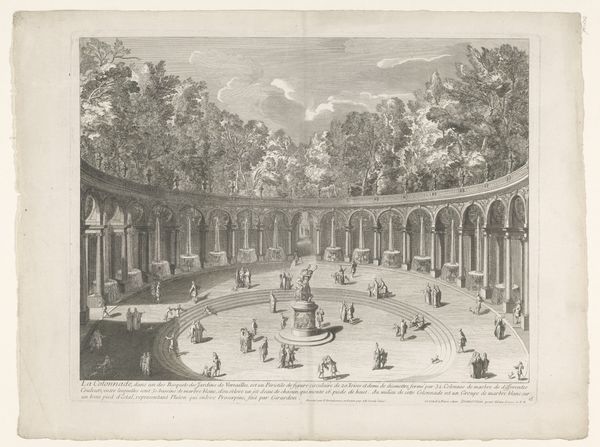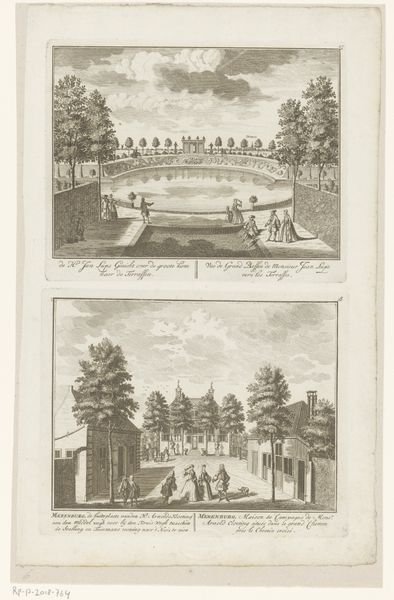
print, sculpture, engraving, architecture
#
statue
#
baroque
# print
#
landscape
#
sculpture
#
cityscape
#
engraving
#
architecture
Dimensions: height 280 mm, width 411 mm
Copyright: Rijks Museum: Open Domain
Curator: This engraving by Maurice Baquoy, dating roughly from 1705 to 1747, depicts the Fountain of Saturn at Versailles. The print medium gives a sense of scale and grandeur. Editor: My immediate impression is of stark geometry softened by nature. The formal, grid-like structure creates an interesting dialogue with the organic forms of the trees. It is cold yet grandiose at the same time. Curator: Notice how Baquoy uses linear precision to articulate the architecture and the meticulous arrangement of the landscape. The sharp lines and detailed rendering showcase a fascination with control and order, aligning with Baroque aesthetics. Semiotically speaking, these elements communicate authority. Editor: Yes, the rigid lines and planned-out structure denote absolute power. The figures, almost like actors on a stage, contribute to the overall theatre of the state, highlighting how garden design itself became a statement of dominance under Louis XIV. Curator: Also, examine the composition. The central axis leads the eye directly to the fountain, creating a focal point. The repetitive pattern of trees and hedges contributes to the visual harmony, structuring how one experiences space. There’s an intriguing use of negative space that further accentuates the design elements. Editor: I see how the negative space emphasizes architectural forms, but what’s missing here is the bustle of life and labor that such grandeur relied on. The image isolates an idealized view of the Palace grounds. The formal garden represented a conquest over nature but doesn't quite reveal its costs or context. Curator: I grant you that the work serves a specific representational function. Nonetheless, we might also consider how it demonstrates Baquoy's skilled command of his tools. The print is, in itself, a form of disciplined workmanship mirroring the control exerted in creating Versailles. Editor: Certainly, one cannot overlook Baquoy’s skills. Reflecting on this piece, it reminds us how powerful visual order was at conveying authority and constructing royal identity within Baroque society, even if it remains a partial portrayal. Curator: Indeed, it’s fascinating how form and function intersect, providing insights into the sensibilities of that era.
Comments
No comments
Be the first to comment and join the conversation on the ultimate creative platform.
